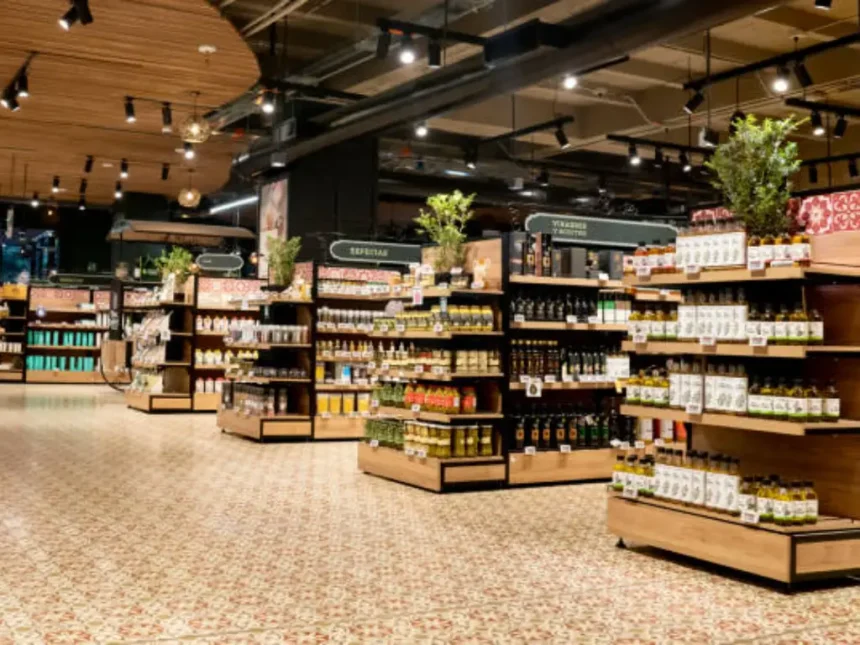Creating an engaging retail space is an art form that requires a keen understanding of visual merchandising. In the fast-paced world of retail, where first impressions are crucial, the layout and presentation of products can significantly impact consumer behaviour. Among the many tools at a merchandiser’s disposal, display retail tables play a pivotal role in maximising the in-store impact and elevating the shopper’s experience.
The Strategic Importance of Display Tables in Retail Environments
Display retail tables are more than mere surfaces on which to place merchandise; they are strategic platforms that showcase products in an accessible, attractive manner. Their strategic placement within a store can draw customers deeper into the shopping environment, guiding them along a deliberate path designed by the retailer. Effective use of display tables can also create focal points, highlight new arrivals, and encourage increased interaction with the merchandise.
The Psychology Behind Effective Table Displays
The psychology of shopping is complex, with various elements influencing consumer decisions. Well-crafted display tables tap into this psychology by creating a sense of abundance and ease of access, while also enabling retailers to tell a visual story. Grouping products in a thematic or complementary way can suggest usage ideas and increase the likelihood of cross-selling. Additionally, tables at the right height and with an inviting design prompt customers to touch and feel the products, an interaction that can lead to a higher conversion rate.
Incorporating Display Tables into Store Design
Integrating display tables into a store’s overall design requires a thoughtful approach. The design of the tables should align with the store’s aesthetic and brand identity, whether it conveys sleek modernity or rustic charm. Consideration of the flow of traffic is important, with tables positioned to create a comfortable shopping experience without obstructing movement. Moreover, scalability is crucial for retailers to accommodate different volumes and types of merchandise as inventory changes.
Maximising Product Visibility with Display Tables
An essential function of display retail tables is enhancing product visibility. The height at which products are displayed can greatly affect their noticeability. Elevated displays can bring products closer to eye level, making them more likely to capture the attention of passing customers. Thoughtful arrangement of items, such as placing bestsellers or limited-time offers at the centre, can also optimise product exposure and boost sales.
Adapting Table Displays to Seasonal Trends
Retail is a dynamic industry, with seasonal trends dictating changes in consumer behaviour. Savvy retailers adjust their table displays to reflect these variations, capitalising on seasonal shopping patterns. Whether it’s back-to-school essentials, holiday gifts, or summer beachwear, timely and thematic table displays can attract customers looking for specific items during different times of the year.
Durability and Functionality Considerations
While aesthetics are pivotal in the selection of display tables, functionality and durability are equally critical. Retail environments are high-traffic areas, and display furniture must withstand the rigours of everyday use. Tables crafted from high-quality materials can endure continual product changes and customer interactions while maintaining their visual appeal.
The Role of Flexibility in Display Table Configuration
Flexibility is a valuable asset in retail merchandising. Deploying display tables that can be easily reconfigured helps retailers to keep the shop floor looking fresh and engaging. Versatile tables that can accommodate various display types—from folded apparel to electronics—ensure that retailers can adapt quickly to inventory changes and evolving merchandising strategies.
Creating a Narrative with Merchandise
A compelling narrative can be woven through the strategic arrangement of products on display tables. Grouping items that tell a story or complement each other encourages customers to envisage the products in their own lives, fostering an emotional connection that can drive sales. A narrative approach also assists in providing clarity and coherence to the in-store experience.
Lighting: Illuminating the Best Features of Products
Lighting plays a crucial role in the effectiveness of display tables. Proper illumination can accentuate the colour, texture, and features of products, making them more enticing to shoppers. Retailers should consider employing a variety of lighting techniques, from spotlights to ambient lighting, to establish the desired mood and focus on the merchandise.
Leveraging Customer Feedback for Display Improvements
Engaging with customer feedback is critical for continuous improvement in retail presentation. Observing how shoppers interact with display tables, alongside actively soliciting feedback, allows retailers to fine-tune their approach and refine layouts to better meet their customers’ needs and preferences.
Encouraging Impulse Purchases Through Strategic Display Table Location
The positioning of display tables can significantly influence impulse buying. By placing such tables near the checkout area or along the path to high-demand sections, retailers can entice last-minute purchases, boosting average transaction values. The careful selection of impulse-buy items displayed on tables close to points of sale can be particularly effective.
Measuring the Impact of Display Tables on Sales Performance
Retailers must measure the impact of their display tables on sales performance to validate their strategies. Monitoring sales data, customer flow, and interaction rates with table displays can reveal insights into what works and what doesn’t, guiding future merchandising decisions.
Conclusion: The Art and Science of Retail Table Displays
In conclusion, the use of display retail tables in retail environments is both an art and a science. By combining visual appeal with strategic placement and adaptability, retailers can maximise their in-store impact. Ultimately, well-executed table displays contribute to an immersive shopping experience that can lead to increased customer satisfaction and sales growth. Retailers must continue to innovate and fine-tune their approach to remain competitive in the ever-evolving landscape of retail merchandising.








